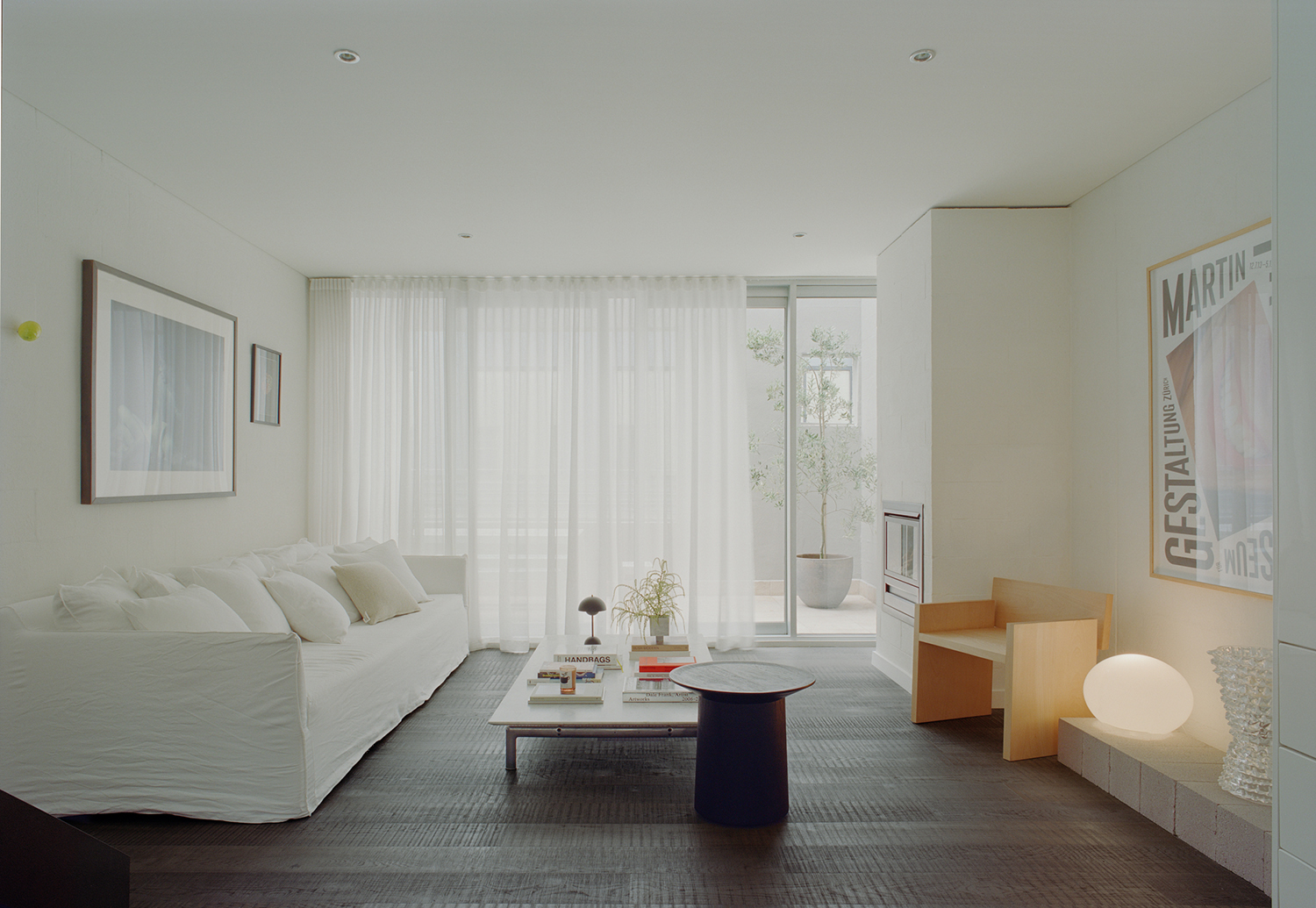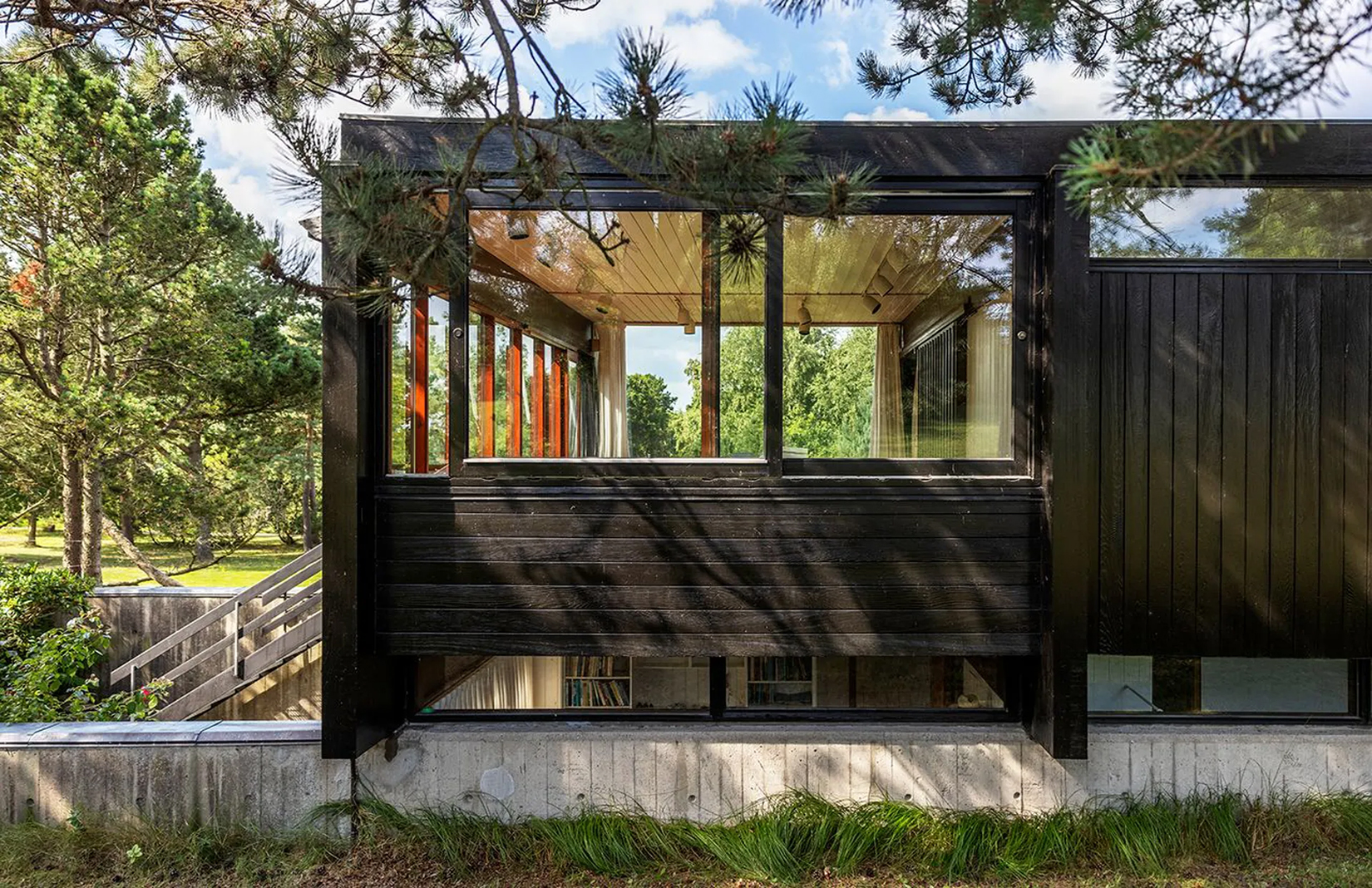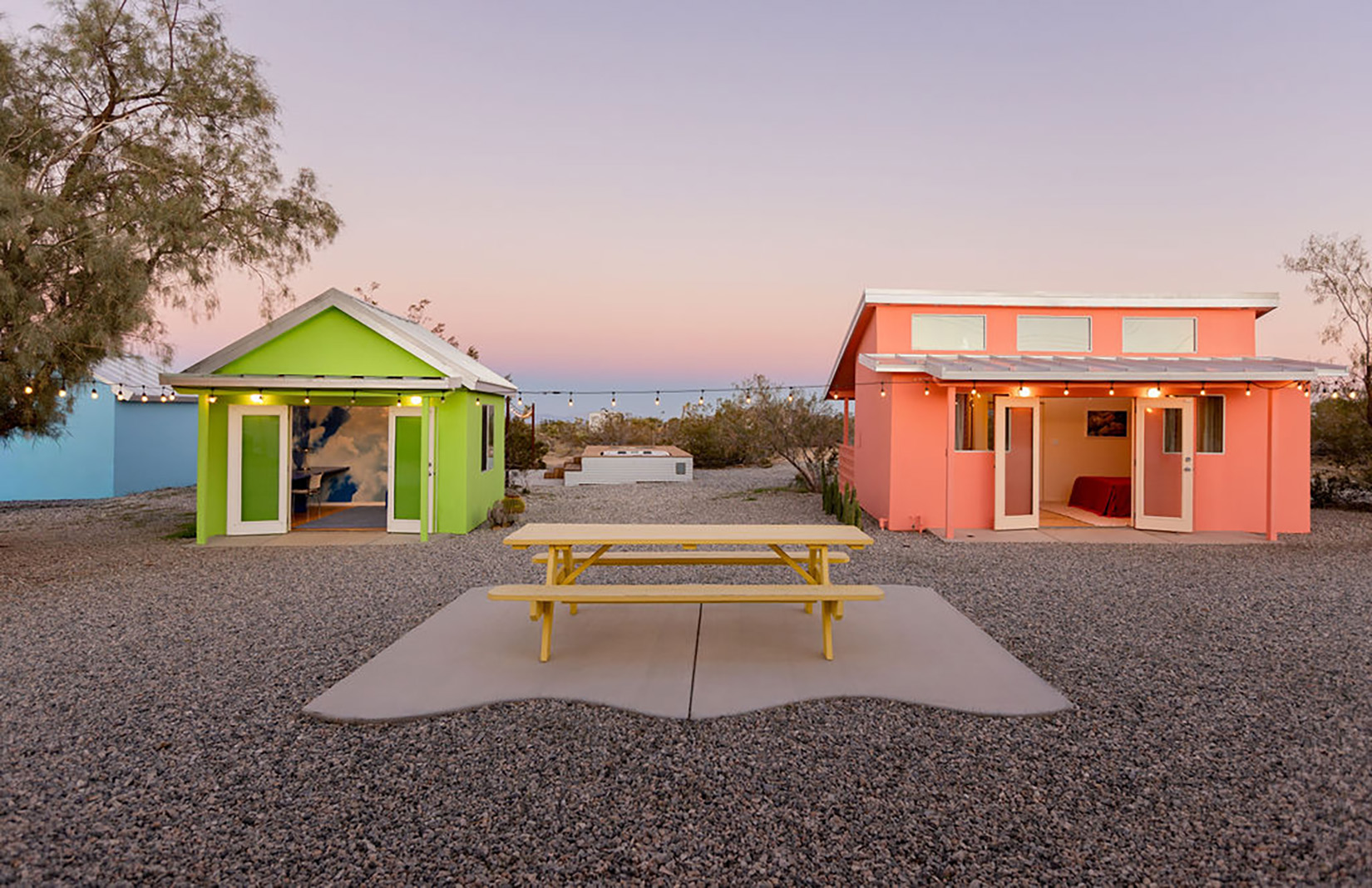Like the lidos of London and the piscines of Paris, Berlin’s bäder come to life in the summer months.
The city has a rich cache of Victorian and early 20th-century swimming pools that survived the onset of WWII. Many have been restored to their former glory – with Veauthier Meyer Architects becoming the go-to practice for such revival acts – while others have taken on new life as restaurants and spas.
Here, we do a lap of everything from Art Nouveau swimming halls to a domed spa with an underwater sound system.
1. Stadtbad Charlottenburg, Alte Halle (1898)
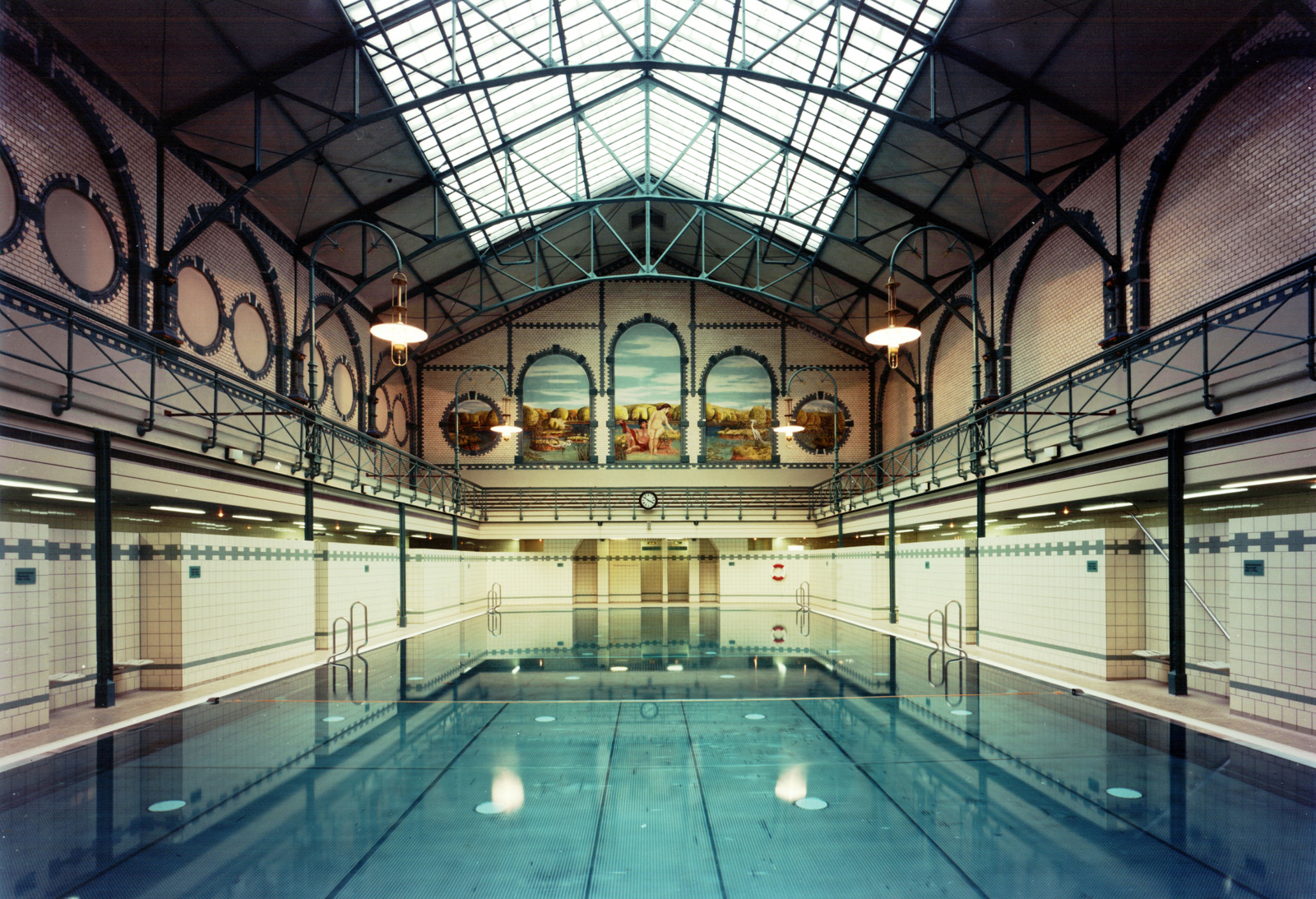
Located in the western neighbourhood of Charlottenburg, this volksbad is the oldest in Berlin and has been listed since 1989. The Art Nouveau Alte Halle (Old Hall) sits behind a brick facade embellished with marine gargoyles, and was designed in 1898 by the neighbourhood’s own starchitect Paul Batring.
2. Stadtbad Oderberger Straße (1899-1902)
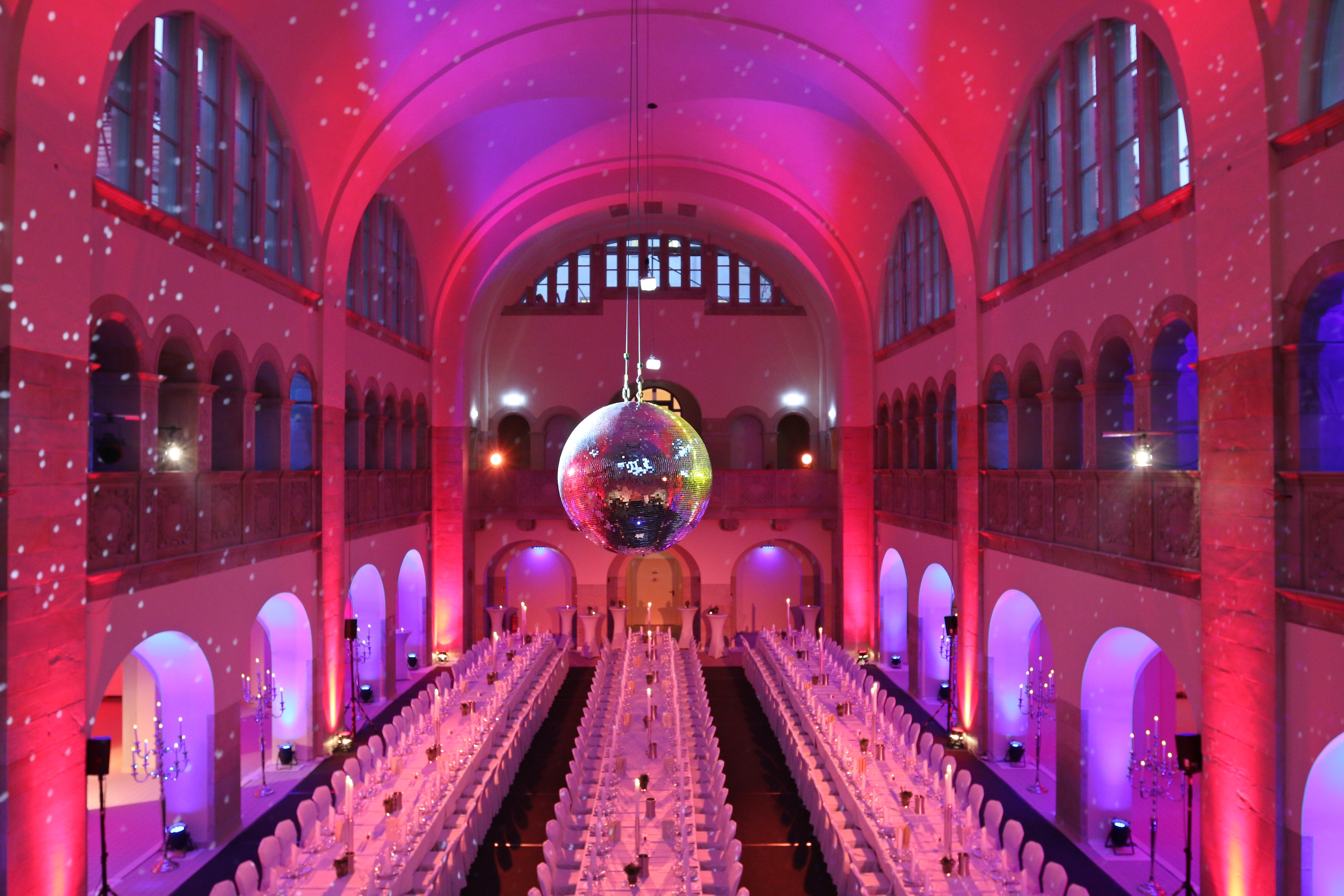
The Stadtbad Oderberger Straße in the Prenzlauer Berg neighbourhood served as a vital provision for public health upon opening in 1902, when most homes didn’t have indoor bathrooms. The listed Neo-renaissance structure was closed for swimming in 1986 although the grand pool hall has since found new life as an events space.
3. Stadtbad Neukölln (1914)

One of the most dramatic of Berlin’s public pools, the Stadtbad Neukölln hides a Roman-inspired hall – complete with mosaics and decorated ionic columns – behind a rather modest facade. Designed by Reinhold Kiehl in 1914, the pool remains a family favourite to this day and underwent restoration in 2009.
4. Stadtbad Mitte (1927-30)
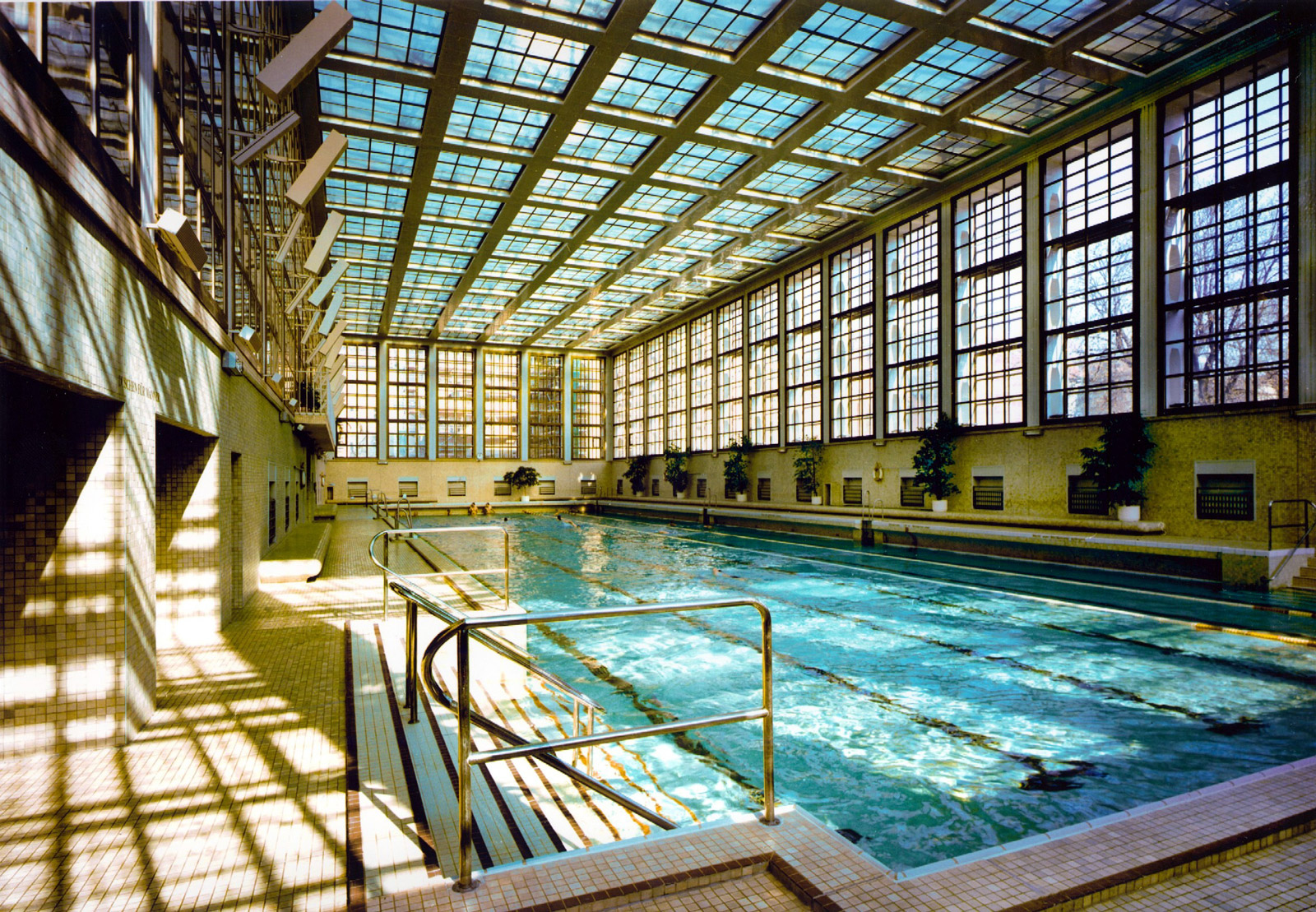
Light, air and sun were the guiding principles in the design of the Bauhaus-influenced Stadtbad Mitte. Architect Carlo Jelkmann was behind the spectacular mullioned ceiling windows, while the classic interior design – complete with brass and frosted glass lamps – was the handiwork of Heinrich Tessenow.
5. Schwimmhalle Finckensteinallee, Lichterfelde (1938)
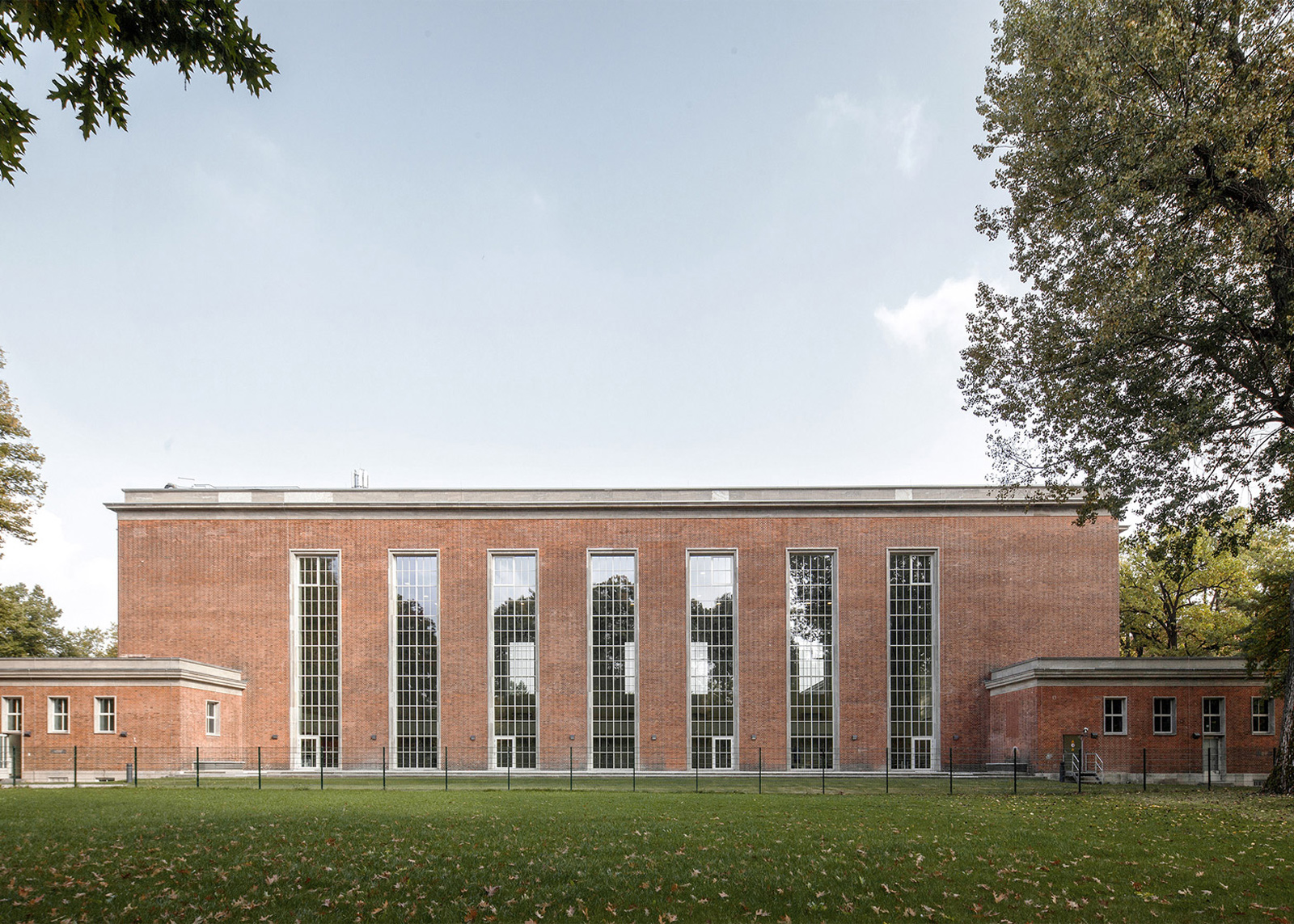
Renovated in 2016 by Berlin’s pool specialists Veauthier Meyer Architects, the Schwimmhalle Finckensteinallee is one of the few pieces of Nazi architecture left standing in the German capital. With its powerful brick exterior and floor-to-ceiling windows, the former SS training barrack was considered one of the most modern sports facilities in the world upon its completion in 1938.
6. Schwimmhalle Fischerinsel (1977)
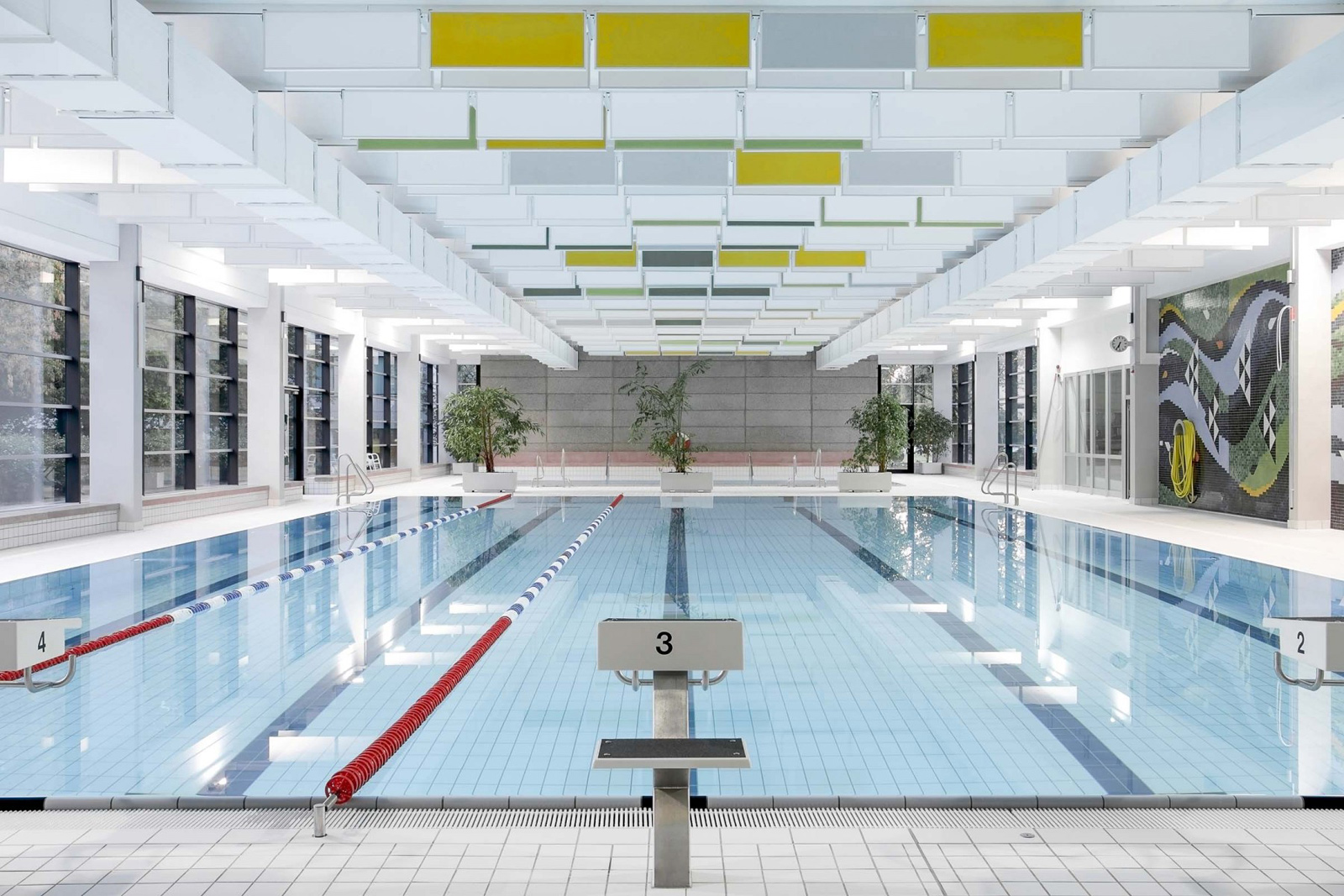
Like the prefab housing blocks in former East Germany, swimming pools were system-built by state architects during the days of the German Democratic Republic. Yet unlike the often sterile monotony of ‘plattenbau’ housing, the city’s pools are some of the finest examples of GDR Modernism. This type C communal pool on the southern part of Museum Island was built in 1977 and is characterised by a slender, undulating roof. Refurbished by Veauthier Meyer in 2009, the new structure maintains the charm of the original with the addition of a new facade and internal colour concept.
7. Liquidrom (2002)
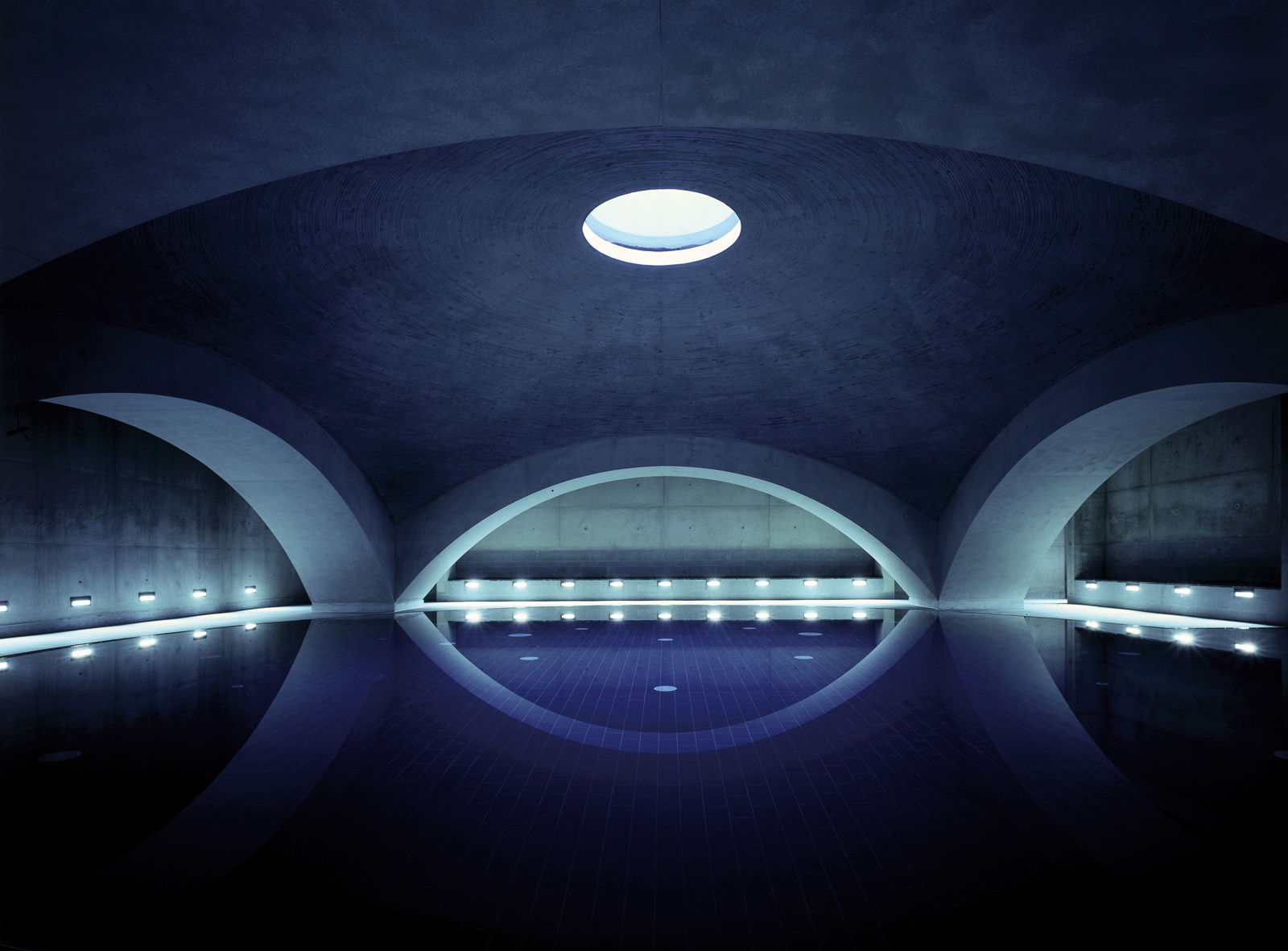
Part spa, part music venue, the Liquidrom is a unique space for Berliners looking to float the hours aways. The saltwater pool features a low-domed roof and was designed by GMP Architekten in 2002. It also has an underwater sound system that pumps out everything from ‘Downbeat’ music to ‘Romantic Harp’.





















